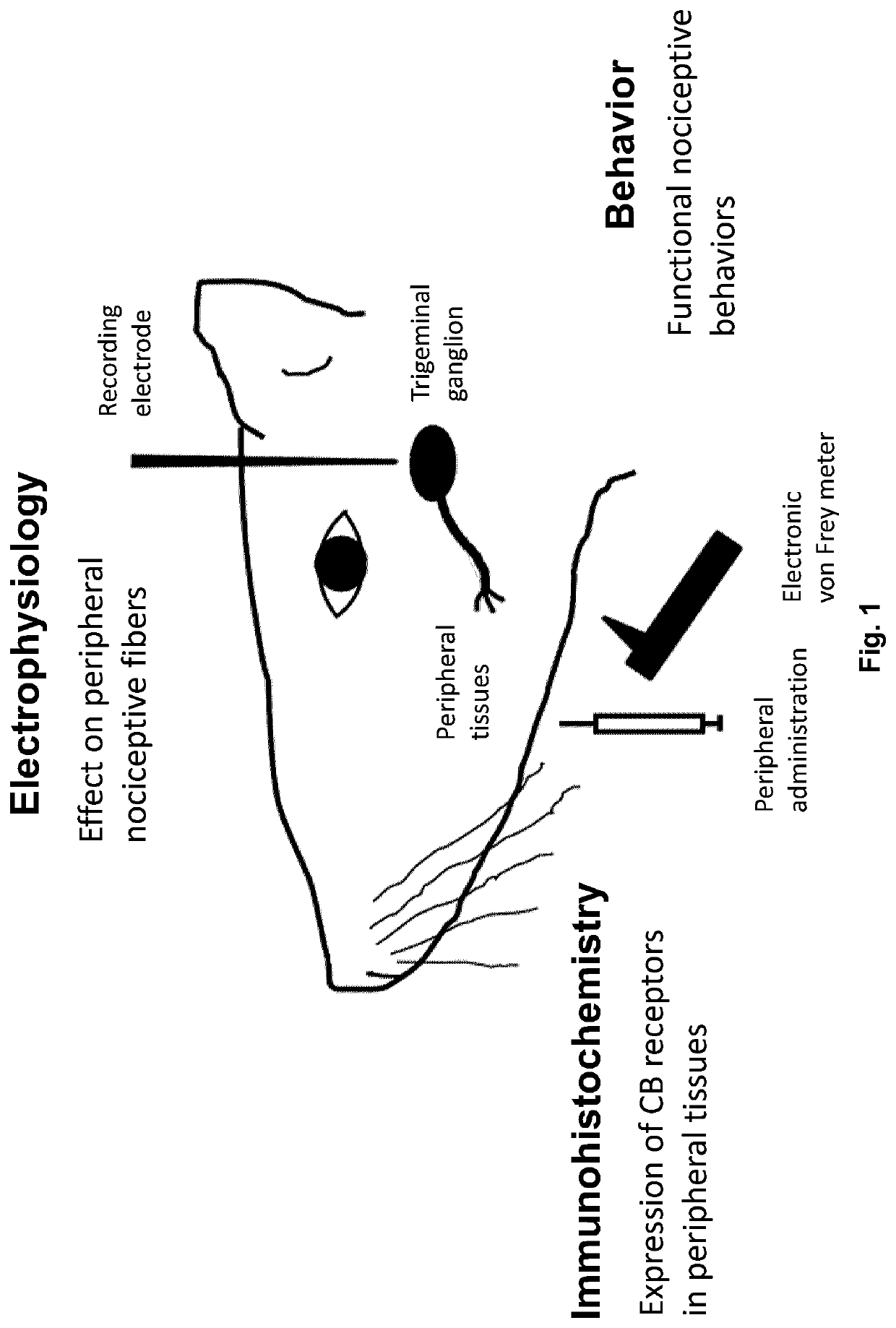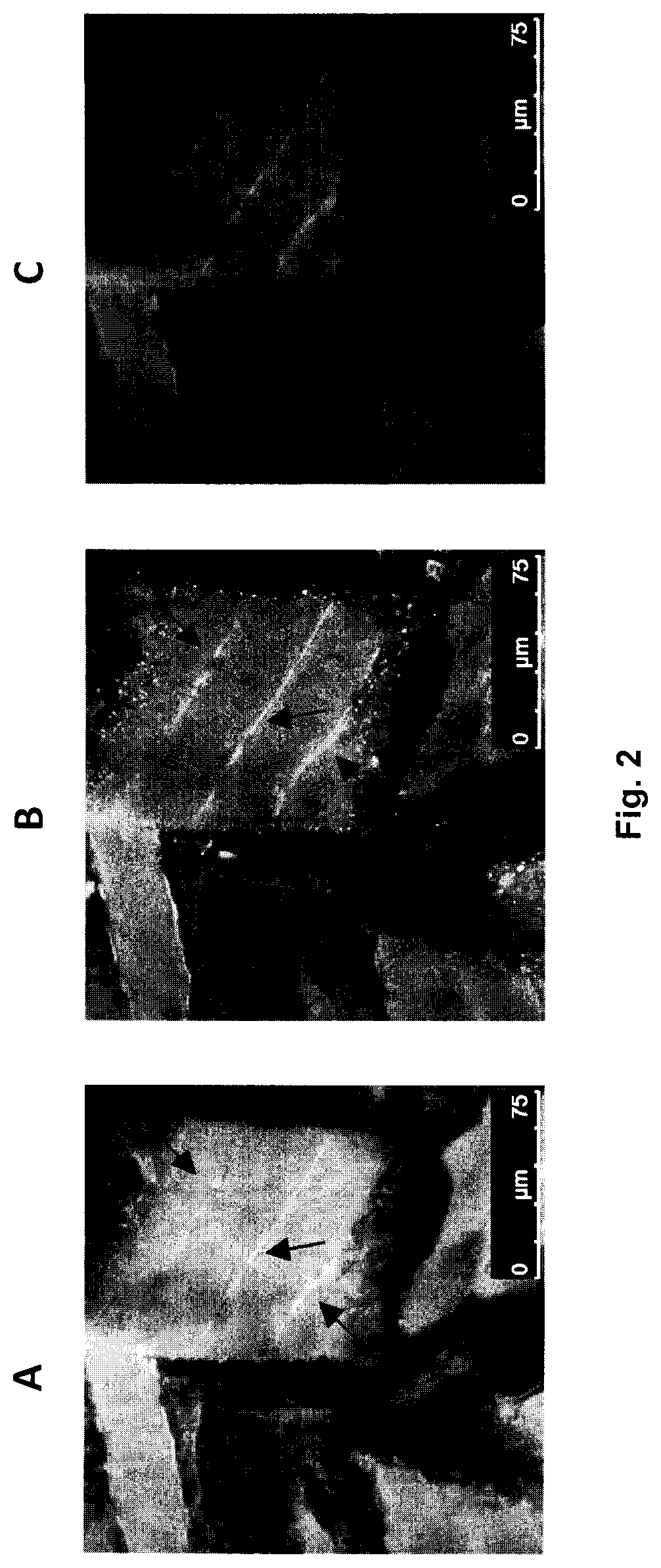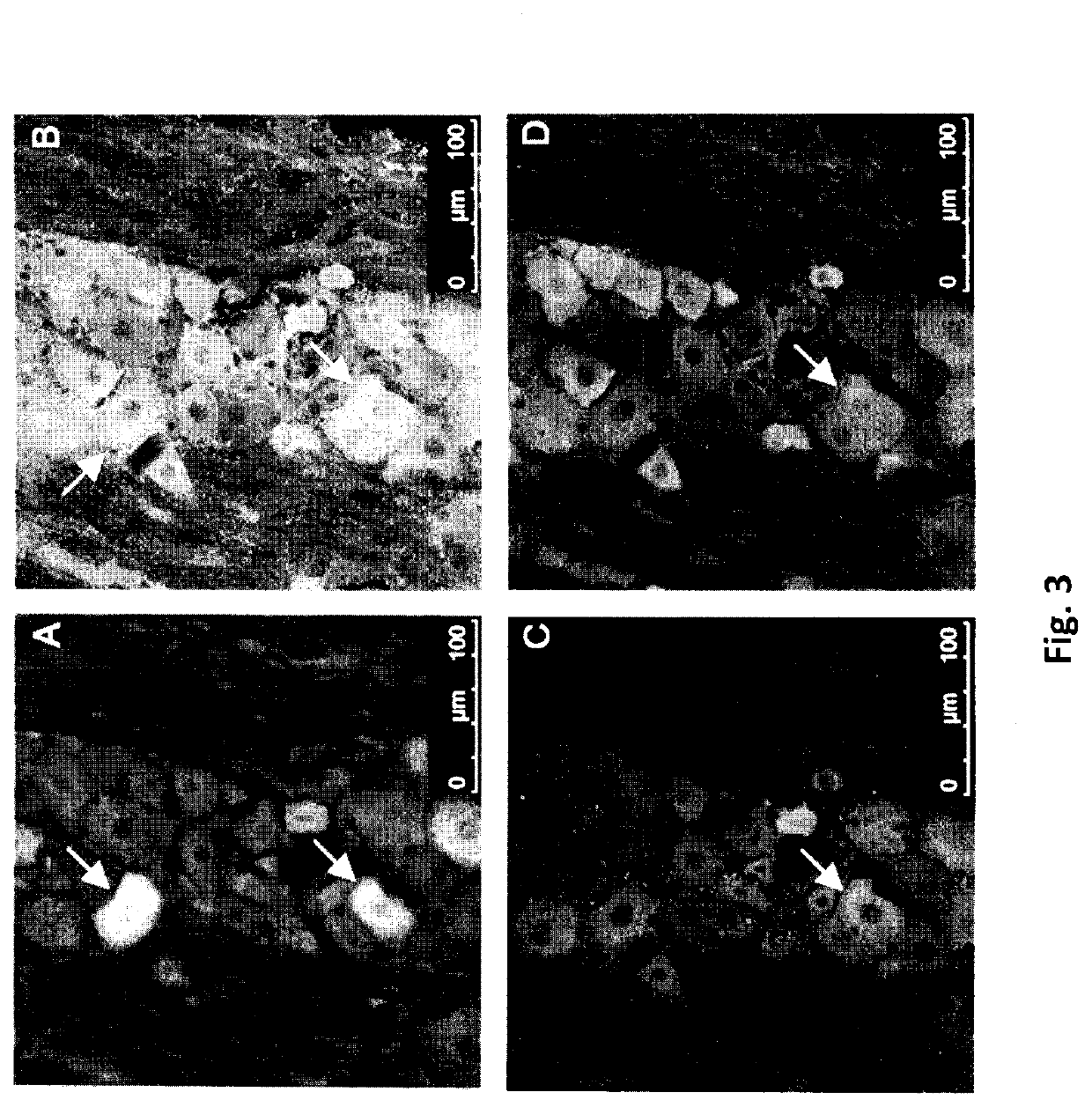Topical formulations of cannabinoids and use thereof in the treatment of pain
a cannabinoid and topical technology, applied in the field of topical formulations of cannabinoids and pain treatment, can solve the problems of limited efficacy and considerable side effects of current treatments, and the uncertainty of how the endocannabinoid system can be recruited to treat specific pain conditions, and achieves no psychoactive effect or no
- Summary
- Abstract
- Description
- Claims
- Application Information
AI Technical Summary
Benefits of technology
Problems solved by technology
Method used
Image
Examples
example 1
ids Decrease Nerve Growth Factor-Induced Muscle Sensitization through Peripheral Cannabinoid Receptors in Female Rats
Introduction
[0229]This study investigated whether peripheral application of cannabinoids can decrease nerve growth factor (NGF)-induced sensitization in female rat masseter muscle; a model which mimics the symptoms of myofacial temporomandibular disorders and fibromyalgia. Cannabinoid (CB) receptors CB1 and CB2 were expressed by trigeminal ganglion neurons that innervate the masseter muscle and also on their peripheral endings. Their expression was greater in TRPV1-positive ganglion neurons. Three days after intramuscular injection of NGF, ganglion neuron expression of CB1 and CB2, but not TPRV1, was decreased. Expression of CB1, but not CB2, was also found in satellite glial cells in the ganglion. In behavioral experiments, intramuscular injections (10 μl) of delta-9-tetrahydrocannabinol (THC, 1 mg / ml), cannabidiol (CBD, 5 mg / ml) and cannabinol (CBN, 1 mg / ml) decreas...
example 2
id Mixtures Show Increased Efficacy in Decreasing Pain Sensitization
[0312]Cannabinoid mixtures were studied to investigate their effect on mechanical thresholds of peripheral pain fibers by behavioral (FIG. 9 and FIG. 11) and electrophysiological observations (FIG. 10 and FIG. 12). The behavioral experiments were performed using essentially identical methods and compositions in Example 1 to produce FIG. 6, except where indicated herein. The electrophysiological experiments were performed using essentially identical methods and compositions in Example 1 to produce FIG. 8, except where indicated herein. Intramuscular injection of a 1:1 mixture of Δ2-cannabidiol to cannabinol at 1 mg / mL, a significant difference between vehicle and mixture was observed in both the behavioral (FIG. 9) and electrophysiological (FIG. 10) tests. Intramuscular injection of a 5 mg / mL to 1 mg / L ratio of Δ2-cannabidiol to cannabinol resulted in a greater increase in relative mechanical threshold as observed by...
example 3
elivery Shows Reduced Neuropathic Pain
[0314]In proof-of-concept study, topical THC (1% in a PLO-gel cream base) reduced neuropathic pain behavior (facial grooming, FIG. 14) and reversed mechanical allodynia in the lower lip skin in the mental nerve ligation model (FIG. 15).
PUM
| Property | Measurement | Unit |
|---|---|---|
| Fraction | aaaaa | aaaaa |
| Fraction | aaaaa | aaaaa |
| Fraction | aaaaa | aaaaa |
Abstract
Description
Claims
Application Information
 Login to View More
Login to View More - R&D
- Intellectual Property
- Life Sciences
- Materials
- Tech Scout
- Unparalleled Data Quality
- Higher Quality Content
- 60% Fewer Hallucinations
Browse by: Latest US Patents, China's latest patents, Technical Efficacy Thesaurus, Application Domain, Technology Topic, Popular Technical Reports.
© 2025 PatSnap. All rights reserved.Legal|Privacy policy|Modern Slavery Act Transparency Statement|Sitemap|About US| Contact US: help@patsnap.com



